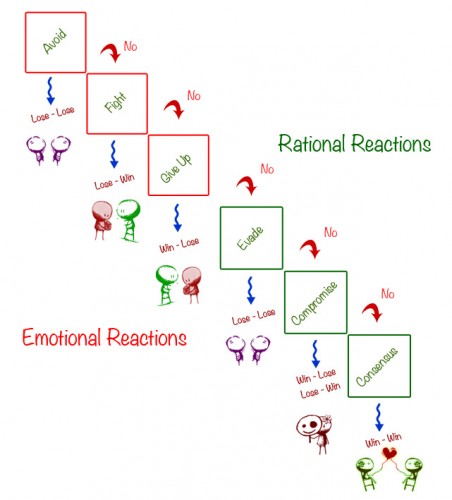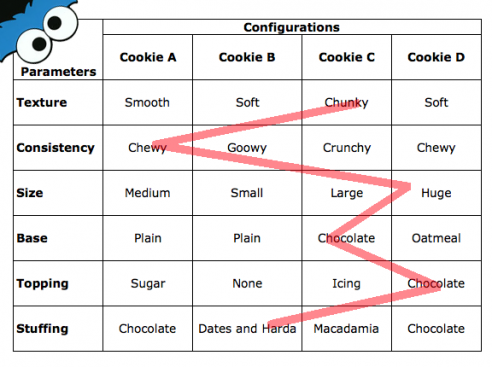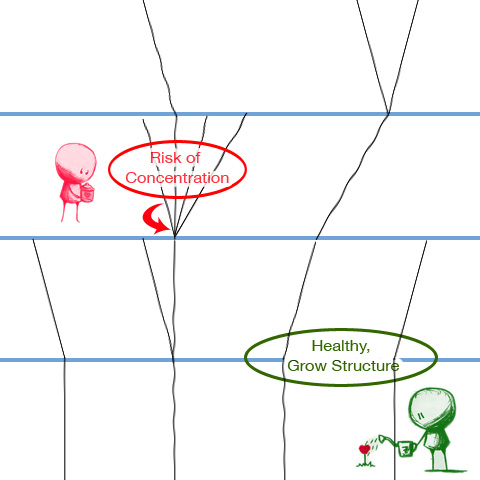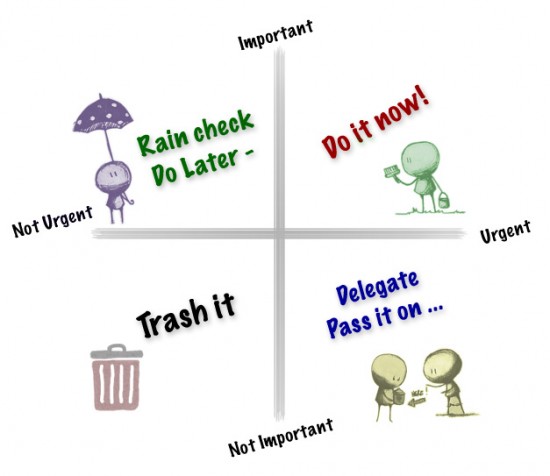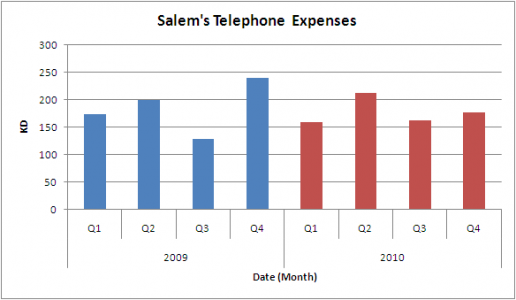![]() Oct 7
Oct 7
Conflict Resolution
Conflict is the condition that debilitates communication – the best way to overcome conflict is to understand the situation and understand your position in context (self awareness).
The conflict resolution model helps you identify the type of conflict and possible outcomes to better understand the situation and your role n the conflict resolution. There are essentially six different ways of dealing with conflict:
- Avoid: escape the conflict, don’t deal with it, and let it fester. The outcome is a lose-lose situation.
- Fight: beat the other side at all costs. Command and conquer. The outcome is a win-lose situation.
- Give up: Let the other side have their own way. Losing is for losers – the outcome is a lose-win situation
- Evade: delegate the decision to a third party and evade confrontation. The outcome is a lose-lose situation
- Compromise: both parties give up a little to win a little – not an ideal solution for either party. The outcome is a win-lose/win-lose situation.
- Consensus: find a new solution developed by both parties. The outcome is a win-win situation.
What’s most important is to understand that the first three are emotional reactions – lead by little or no reasoning. The latter three are rational reactions caused by a preceding thought process leading up to an outcome.
Lets put this into context – your husband wants to watch Batman go head to head with the Joker, but you’d rather watch Mr. Big put the moves on Carrie. You both sit on the couch, both reach for the remote, and both try to call on your Jedi mind powers to kill the other person – conflict Here are the situations in context:
- Avoid: leave the room, go to bed, and pray for lightning to strike the television set.
- Fight: you take a spatula and beat your husband to death while he tries to stay in control of the remote control. Promise he will sleep on the couch that night. Pull out all the stops until he gives in.
- Give up: What the heck, it’s not worth it, you’ll give up on a good show – life’s not worth the strife.
- Evade: Tell your mother – spouses hate dealing with the in-laws.
- Compromise: Watch half of Batman and half of Sex in the City.
- Consensus: Get on Netflix.com, but both, and spend a cosy night together watching both movies right after the other – order Chinese and be merry.
“Our failures are due not to the defeats we suffer, but to the conflicts we don’t participate in”
This model is from The Decision Book. Please make sure to visit 50 Top Models – the author’s website. If you like what you see, buy the book! Support the author and awesome content.
![]() Oct 7
Oct 7
The Family Tree Model
The family tree model is based on the assumption that people are fundamentally social and connected through shared interests – products, brands, people – and their inherent desire to discuss their interests among themselves.
The model maps out how one person is connected to another, revealing important nodes in your relationships – exposing over concentrated nodes that pose a risk to a certain branch in your tree. If you break an over concentrated node in your tree, you lose all branches linked to it. It’s a typical dilemma – if you have a fall out with one person, you lose all people related to that person in your circle of acquaintances.
How is this significant for strategy and decision making? – Think (personal) brand loyalty.
Map out a network of your customers and how they are related – through conversations about your brand – and you will find the most influential clients. Clients with the most branches require the most maintenance. Identify other potential links to fortify frail relationships (diversification), and grow more trees from the roots of your map (acquisition).
Real life applications:
- Mapping out results from a survey asking “Who would you recommend us to?”
- Map of how your tweeps are interconnected to find the influencers.
- Map conversations based on a topic – e.g. your recent marketing campaign
- Map work relationships: identify people with clout – acquire those relationships.
This model is from The Decision Book. Please make sure to visit 50 Top Models – the author’s website. If you like what you see, buy the book! Support the author and awesome content.
![]() Oct 6
Oct 6
The Eisenhower Matrix
“The most urgent decisions are rarely the most important ones”.
The Eisenhower matrix helps you organise your tasks by breaking them down into one of four possible priorities.
Ask yourself:
- When will I deal with the things that are important but not urgent?
- When will I take the time to deal with important tasks before they become urgent?
- What tasks are urgent but not important that I can delegate?
- What tasks are neither and where’s the closest trash can?!
Or you can put this matrix on your white board, write tasks on Post-It notes and stick them where they belong.
It’s brilliant.
“Better late than never. But never late is better”.
This is from The Decision Book
![]() Aug 2
Aug 2
40 Ways to Crash a Product Launch
Pre-Launch Phase
1. No market research on the product or the market has been done.
2. Most of the budget was used to create the product; little is left for launching, marketing, and selling it. 3. The product is interesting but lacks a precise market.
4. The productʼs key differentiators and advantages are not easily articulated.
5. The product defines a new category, so consumers or customers will need considerable education before it can be sold.
6. The sales force doesnʼt believe in the product and isnʼt committed to selling it.
7. Because the target audience is unclear, the marketing campaign is unfocused.
8. Distribution takes longer than expected and lags behind the launch.
9. Sales channels are not educated about the product and thus slow to put it on shelves.
10. The product lacks formal independent testing to support claims.
11. The marketing campaign is developed in-house by the manufacturer and lacks objectivity.
12. The product is untested by consumers; only the company can assert its benefits.
13. The website is the primary place to order, but the product description is unclear and the site isnʼt fully functional.
Launch Phase
14. The product is launched too hastily and doesnʼt work reliably. 15. The launch is aimed at the wrong target audience.
16. Supplies of the product are insufficient to satisfy orders.
17. The product is launched too late for its key selling season. 18. The product doesnʼt fit into any key selling season.
19. The manufacturerʼs claims canʼt be backed up.
20. A governing body (the FTC, the FDA) pulls the product, citing false claims.
21. The product is given a limited “trial at retail†but without public relations, marketing, or promotion to “turn†it.
22. The product is launched without influencers to promote its efficacy.
23. The launch budget is insufficient to “pull†the product off the shelf.
24. The product has no trained spokesperson to educate the media.
25. Management launches the marketing campaign before distribution is complete.
26. Management has promised the board and stockholders an instant hit without considering how much time is needed to educate consumers about the product.
27. The ad campaign is untested and ineffective.
28. The launch campaign depends solely on PR to sell the product.
29. The company spends the entire marketing/advertising budget at launch, so no funds are left to sustain the campaign. 30. Company executives underestimate the value of Twitter and Facebook.
31. Retailers are given no incentives to feature the product.
32. All marketing dollars go to advertising and public relations, none to social media.
33. Line extensions arenʼt test-marketed as thoroughly as the original product, so they fail.
34. The product is launched to capitalize on a fad that soon fizzles.
35. The product design is unique but confuses consumers, who donʼt understand how the product works.
36. The spokesperson is a bad fit with the product, creating a discordant message.
37. The product is priced too high for mass adoption.
38. Consumers are unclear about what demographic the product is geared toward.
39. The product is manufactured offshore; quality control issues result in negative consumer feedback and product returns.
40. The ad campaign is launched before the sales force is fully briefed, so customers know more than salespeople about the product.
Source: Why Most Product Launches Fail by Joan Schneider and Julie Hall
![]() Dec 30
Dec 30
How predictable is your spending?
If you plan on reducing your expenses, the first place to look is probably your spending behaviour. I was actually surprised at how regular personal spending can be.
I track all my expenses and yes they’re pretty predictable: food, clothing, gas, even accidental ‘big’ spends (like a spare tyre, gifts, broken phone, medical, etc.) average out to a specific figure every month.
The graph above represents something I thought was pretty variable; phone calls.
I’ve been a good in 2010 and overall spending is less on calls and SMSes (whatsApp FTW!), but still the trend is the same year on year; it just shifted down a little.
If you don’t track your spending and want to start; it’s pretty easy, just log into your online banking and start categorising the spends that you can see/remember. Then keep it up!
What do your graphs look like I wonder … !? o.o
Oh and for the marketeers … this predictability is what makes marketing information systems so effective and efficient.
![]() Sep 18
Sep 18
The 22 Immutable Laws of Marketing
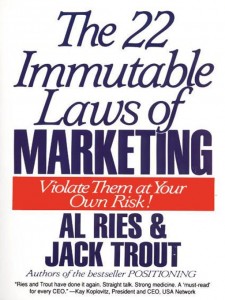
Great book on positioning. A quick read worth every turn of the page filled with real cases and actionable advice.
Click here for a mind map summary of the ideas in the book.

